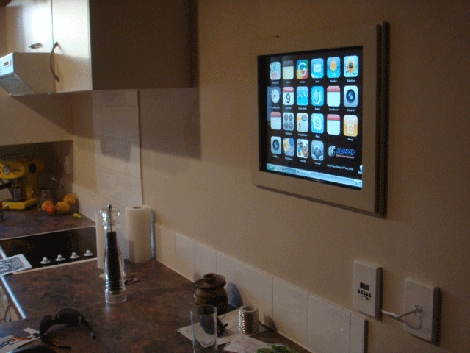
[Ryan] and his wife wanted to have a touchscreen interface in the kitchen to store their recipes and for various music, video, and Internet entertainment. We know where they’re coming from, we’re quite tired or cleaning flour (or worse!) off of our palm pilot screen after baking. The display you see on the wall is just the interface, a computer is stored in the cabinet below the counter. He’s running Windows 7 and using a custom graphic interface which is intended to mimic the looks of the iPhone. He’s sharing the UI as open source and has just started a forum for those interested in trying it out and adding to the available features.
One thing we noticed in his writeup, he prototyped this with an old 2 GHz computer but upgraded the hardware because it was too slow. This pushed to total build price to about $1350 USD. We can’t help but mention that using a Linux based system may have saved him from the upgrade. We know there’s some extremely powerful media software that runs on light hardware specs.
[Thanks Hannah]
















